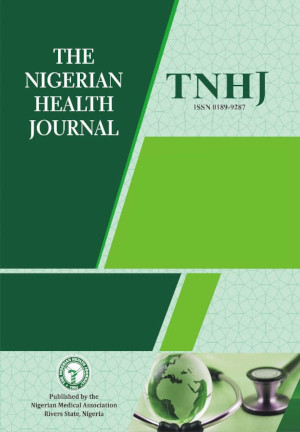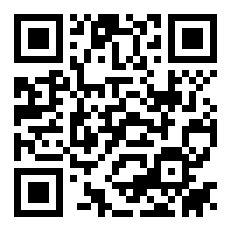Knowledge of Childhood Diarrhoea and Home-Based Care Practices in a Rural Community in Northern Nigeria
DOI:
https://doi.org/10.60787/tnhj.v23i2.664Keywords:
Caregiver, Under-fives, diarrhoea, Home –based, knowledge, Northern NigeriaAbstract
Background: Diarrhoeal is a major public health problem among under five children (U5) in developing countries. This survey assesses knowledge of childhood diarrhoea and home-based care practices among caregivers for U5 children in a rural community in North Western Nigeria
Methods: A descriptive cross-sectional study among of 244 mother/caregivers of under-five children in a rural Gangara community between July- August 2022 using a systematic random sampling technique and a structured, interviewer administered questionnaire. The outcome variables for bivariate (chi square) analysis were the knowledge grade for diarrhoea, while the explanatory variables was the socio-demographic characteristics of the caregivers. Data were analysed with statistical package for social sciences (SPSS) version 26. The level of statistical significance was set at p<0.05.
Results: The knowledge score for mode of transmission of diarrhoea and danger signs for dehydration were 70.5%, and 47.5% respectively. One third of the caregivers could not identify sunken eyeball 79 (32.4%) and tearlessness 110 (45.1%) as signs of dehydration. The common diarrhea home-based care practices were the use of ORS (98.8%), herbal concoction, (48.8%) and salt sugar solution (17.6%). Some caregivers would treat under-five diarrhoea at home with lomotil 115 (47.1%) ciprofloxacin 44 (18%) and metronidazole (34.8%). Only 54 (22%) caregivers would go to the hospital immediately they noticed symptoms of diarrhoea.
Conclusion: The knowledge of diarrhoea was poor and most home-based care practices were unconventional. Hence, the burden of diarrhoea disease was high. The LGA health authorities should facilitate continuous health education programs on diarrhoea diseases in this community
Downloads
References
Adewemimo, A; Kalter, H.D; Perin, J; Koffi, A.K.; Quinley, J; Black, R.E. Direct estimates of cause-specific mortality fractions and rates of under-five deaths in the northern and southern regions of Nigeria by verbal autopsy interview.PLoS ONE2017,12, e0178129.
Yaya S, Hudani A, Udenigwe O, Shah V, Ekholuenetale M, Bishwajit G. Improving water, sanitation and hygiene practices, and housing quality to prevent diarrhoeaamong under-five children in Nigeria. Tropical Medicine and Infectious Disease. 2018 Apr 12; 3 (2):1-11
Desta BK, Assimamaw NT, Ashenafi TD. “Knowledge, Practice, and Associated Factors of Home-Based Management of Diarrhea among Caregivers of Children Attending Under-Five Clinic in Fagita Lekoma District, Awi Zone, Amhara Regional State, Northwest Ethiopia, 2016” Nursing Research and Practice. 2017:1-8.
World Health Organization. Diarrhoeal Disease. Available from:http://www.who.int/news-room/fact-sheets/detail/diarrhoeal-disease. [Last accessed on 2018 Jul 05]..
Jiwok, J.C, Adebowale, A.S, Wilson, I.Patterns of diarrhoeal disease among under-five children in Plateau State, Nigeria, 2013–2017.BMC Public Health21, 2086 (2021). https://doi.org/10.1186/s12889-021-12110-y
Dairo MD, Ibrahim TF, Salawu AT. Prevalence and determinants of diarrhoea among infants in selected primary health centres in Kaduna north local government area, Nigeria. Pan Afr Med J. 2017;28:109.https://doi.org/10.11604/pamj.2017.28.109.8152.
National PopulationCommission -NPC/Nigeria and ICF. 2019. Nigeria Demographic and Health Survey 2018. Abuja, Nigeria, and Rockville, Maryland, USA: NPC and ICF.
Aneja S. Integrated management of newborn and childhood illness (IMNCI) strategy and its implementation in real life situation. The Indian Journal of Pediatrics. 2019 Jul 1;86(7):622-7.
Debel LN, Nigusso FT. Integrated community case management utilization status and associated factors among caretakers of sick children under the age of 5 years in West Shewa, Ethiopia. Frontiers in Public Health. 2022 Jul 20; 10:929764.
Shewangizaw B, Mekonen M, Fako T, Hoyiso D, Borie YA, Yeheyis T, Kassahun G. Knowledgeand attitude on home-based management of diarrheal disease among mothers/caregivers of under-five children at a tertiary hospital in Ethiopia. The Pan African Medical Journal. 2023 Jan 19; 44:38-38
Rahman MM, Tabash MI, Salamzadeh A, Abduli S, Rahaman MS.Sampling techniques (probability) for quantitative social science researchers: a conceptual guideline with examples. Seeu Review. 2022;17(1):42-51.
Mujtaba B, Chimezie CB, Braimah RO, Taiwo AO, Adebayo IA, Ndubuizu GU, Bruno IO, Jaafaru R, Kaura AM, Fawa AS, Alani Y. Knowledge, Attitude and Practices of Health Care Workers towards NOMA in a Tertiary Institution in North-western Nigeria: Journal of Dental Research. 2022 Aug 14;7(2):110-5.
Lee F, Suryohusodo AA. Knowledge, attitude, and practice assessment toward COVID-19 among communities in East Nusa Tenggara, Indonesia: A cross-sectional study. Frontiers in Public Health. 2022 Oct 31; 10:957630.
Odo C, Onalu C, Nwatu U, Nwafor N, Ebimgbo S. Factors associated with the prevalence of diarrhoea among children in rural areas of Enugu State, Nigeria: Practice considerations for social workers. International Social Work. 2023 Mar; 66(2):518-33.
Lungu EA, Darker C, Biesma R. Determinants of healthcare seeking for childhood illnesses among caregivers of under-fivechildren in urban slums in Malawi: a population-based cross-sectional study. BMC pediatrics. 2020 Dec; 20(1):1-3.
Vishwakarma D, Puri P, Sharma SK. Interlinking menstrual hygiene with Women's empowerment and reproductive tract infections: Evidence from India. Clinical Epidemiology and Global Health. 2021 Apr 1; 10:100668.
Ebrahim NB, Atteraya MS. Oral rehydration salts therapy use among children under five years of age with diarrhoeain Ethiopia. Journal of public health research. 2021 Feb 8; 10(1): jphr-2021.
World Health Organization. Child and adolescent health in humanitarian settings: operational guide: a holistic approach for programme managers2021.
IkonneEU. Appropriate technologies for health and disease: an innovative approach to drive sustainable health care delivery. Journal of the Nigerian Optometric Association. 2018 Jun 25; 20(2):2-7.
Das, Jai K Salam, Rehana A; Bhutta, Zulfiqar A Global burden of childhood diarrhoeaand interventions. Current Opinion in Infectious Diseases 27(5): p 451-458, October 2014. | DOI: 10.1097/QCO.0000000000000096
Atia, Antwan N. MD; Buchman, Alan L.Oral Rehydration Solutions in Non-Cholera Diarrhoea: A Review. American Journal of Gastroenterology. 2009;104(10): 2596-2604.
Khan HR, Sarrah AA, Sharfa K, TulQL, Qadri KH. Diphenoxylate-atropine (Lomotil) Toxicity in Infantile Diarrhea: A Case Report of Therapeutic Failure. Cureus. 2019;11(10):11-16
Odo JI, Aernan PT, Sar TT, Nweke OA. Microbiological Quality of Herbal Formulation Used for the Treatment of Typhoid Fever Sold in Makurdi Metropolis, Central Nigeria. Asian Journal of Healthy and Science. 2023 Jan 25;2(1):15-26.
Heine RG, AlRefaee F, Bachina P, De Leon JC, Geng L, Gong S, Madrazo JA, Ngamphaiboon J, Ong C, Rogacion JM. Lactose intolerance and gastrointestinal cow’s milk allergy in infants and children–common misconceptions revisited. World Allergy Organization Journal. 2017 Dec; 10:1-8.
Dhingra U, Kisenge R, Sudfeld CR, Dhingra P, Somji S, Dutta A, Bakari M, Deb S, Devi P, Liu E, Chauhan A. Lower-dose zinc for childhood diarrhoea—A randomized, multicenter trial. New England Journal of Medicine. 2020 Sep 24; 383(13):1231-41.
Fikire A, Ayele G, Haftu D. Determinants of delay in care seeking for diarrhoeal diseases among mothers/caregivers with under-five children in public health facilities of Arba Minch town, southern Ethiopia; 2019. PloS one. 2020 Feb 13; 15(2):e0228558.
Aftab W, Shipton L, Rabbani F, Sangrasi K, Perveen S, Zahidie A, et al. Exploring health care seeking knowledge, perceptions and practices for childhood diarrhoeaand pneumonia and their context in a rural Pakistani community. BMC health services research. 2018 Dec; 18(1):1-10.
Bajait C, Thawani V. Role of zinc in pediatric diarrhoea. Indian journal of pharmacology. 2011 May;43(3):232–235.
Sahoo KC, Hulland KR, Caruso BA, Swain R, Freeman MC, Panigrahi P, Dreibelbis R. Sanitation-related psychosocial stress: A grounded theory study of women across the life-course in Odisha, India. Social science & medicine. 2015 Aug 1; 139:80-9.
Caruso BA, Clasen TF, Hadley C, Yount KM, Haardörfer R, Rout M, Dasmohapatra M, Cooper HL. Understanding and defining sanitation insecurity: women’s gendered experiences of urination, defecation and menstruation in rural
Downloads
Published
Issue
Section
License
Copyright (c) 2023 Journal and Publisher

This work is licensed under a Creative Commons Attribution-NonCommercial-NoDerivatives 4.0 International License.
The Journal is owned, published and copyrighted by the Nigerian Medical Association, River state Branch. The copyright of papers published are vested in the journal and the publisher. In line with our open access policy and the Creative Commons Attribution License policy authors are allowed to share their work with an acknowledgement of the work's authorship and initial publication in this journal.
This is an open access journal which means that all content is freely available without charge to the user or his/her institution. Users are allowed to read, download, copy, distribute, print, search, or link to the full texts of the articles in this journal without asking prior permission from the publisher or the author.
The use of general descriptive names, trade names, trademarks, and so forth in this publication, even if not specifically identified, does not imply that these names are not protected by the relevant laws and regulations. While the advice and information in this journal are believed to be true and accurate on the date of its going to press, neither the authors, the editors, nor the publisher can accept any legal responsibility for any errors or omissions that may be made. The publisher makes no warranty, express or implied, with respect to the material contained herein.
TNHJ also supports open access archiving of articles published in the journal after three months of publication. Authors are permitted and encouraged to post their work online (e.g, in institutional repositories or on their website) within the stated period, as it can lead to productive exchanges, as well as earlier and greater citation of published work (See The Effect of Open Access). All requests for permission for open access archiving outside this period should be sent to the editor via email to editor@tnhjph.com.





